International Steel Prices

Foreign vs. Domestic Hot Rolled Steel Price Analysis
Written by Brett Linton
May 23, 2019
The following calculation is used by Steel Market Update to identify the theoretical spread between foreign hot rolled steel prices (delivered to U.S. ports) and domestic hot rolled coil prices (FOB domestic mills). We want our readers to be aware that this is only a “theoretical” calculation as freight costs, trader margin and other costs can fluctuate, ultimately influencing the true market spread.
We are comparing the SMU U.S. hot rolled weekly index to CRU hot rolled weekly indices for Germany, Italy and the Far East (East and Southeast Asian port).
![]() SMU now includes a 25 percent import tariff in our foreign vs. domestic price calculations, effective on foreign prices after March 23, 2018. We then add $90 per ton to the foreign prices in consideration of freight costs, handling, trader margin, etc. This provides an approximate “CIF U.S. ports price” that can then be compared against the SMU U.S. hot rolled price. The difference between the domestic and foreign hot rolled prices is then referred to as the “price spread.” As the price spread narrows, the competitiveness of imported steel into the United States is reduced. If the spread widens, then foreign steel becomes more attractive to U.S. flat rolled steel buyers. A positive spread means foreign steel has a price advantage (U.S. prices are higher than foreign prices), while a negative spread means domestic steel has a price advantage (U.S. prices are less than foreign prices). Note that we do not include any anti-dumping (AD) or countervailing duties (CVD) in this analysis.
SMU now includes a 25 percent import tariff in our foreign vs. domestic price calculations, effective on foreign prices after March 23, 2018. We then add $90 per ton to the foreign prices in consideration of freight costs, handling, trader margin, etc. This provides an approximate “CIF U.S. ports price” that can then be compared against the SMU U.S. hot rolled price. The difference between the domestic and foreign hot rolled prices is then referred to as the “price spread.” As the price spread narrows, the competitiveness of imported steel into the United States is reduced. If the spread widens, then foreign steel becomes more attractive to U.S. flat rolled steel buyers. A positive spread means foreign steel has a price advantage (U.S. prices are higher than foreign prices), while a negative spread means domestic steel has a price advantage (U.S. prices are less than foreign prices). Note that we do not include any anti-dumping (AD) or countervailing duties (CVD) in this analysis.
As of Wednesday, May 22, the CRU German HRC price was $489 per net ton, down $13 from the previous week, and down $20 over two weeks prior. Adding tariffs and import costs, that puts the price at $701 per ton from Germany delivered to the U.S. The latest Steel Market Update hot rolled price average is $605 per ton for domestic steel, down $20 from last week and down $35 over two weeks ago. The spread between the German and U.S. HR price is now -$96 per ton, down from -$93 last week and down from -$86 two weeks ago. This means domestic hot rolled steel is theoretically $96 per ton cheaper than German steel imported into the U.S. We are now on a 27-week negative spread streak. The four-week average price spread is now -$94 per ton, up $3 from last week.
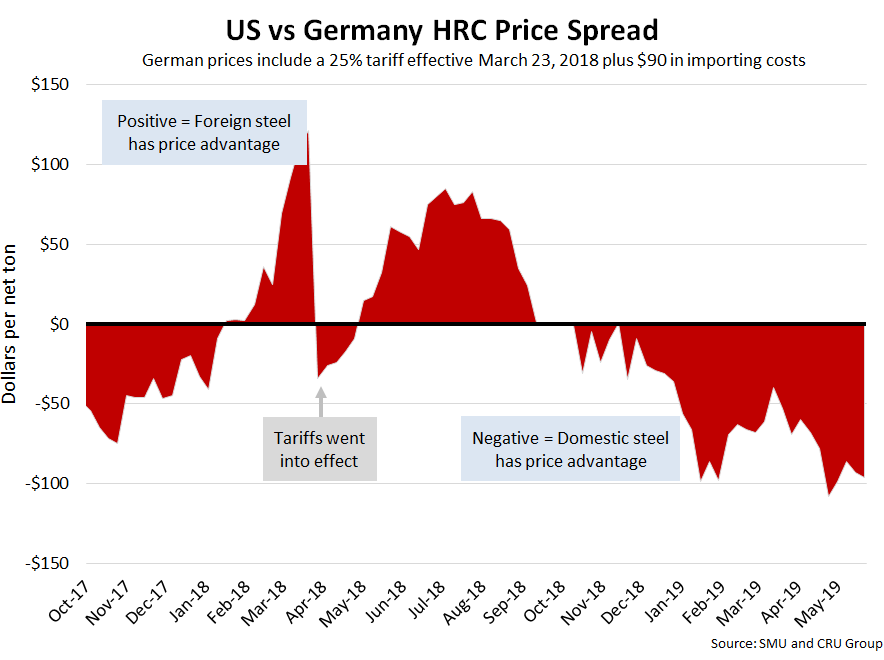
CRU published Italian HRC prices at $465 per net ton, up $1 from last week and up $2 from two weeks prior. After adding tariffs and import costs, the delivered price of Italian HRC is approximately $671 per ton. Therefore, the spread is now -$66 per ton, down from -$45 last week and down from -$29 two weeks ago. That means domestic sourced steel is theoretically now $66 per ton cheaper than importing Italian HRC into the U.S. This is the ninth consecutive week with a zero or negative price spread. The four-week average price spread is now -$43 per ton, down $7 from last week.
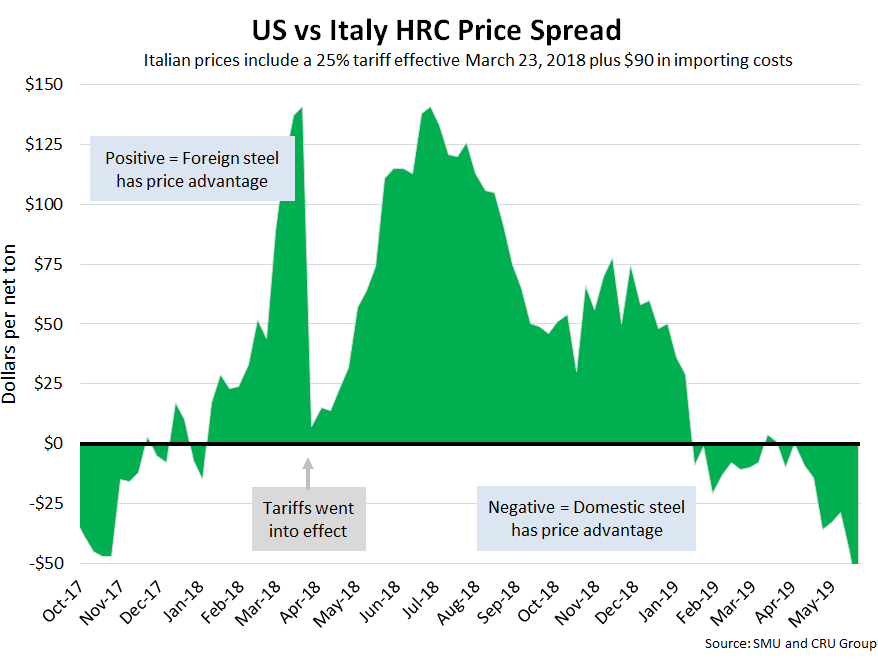
The CRU Far East HRC price fell $5 over last week to $476 per net ton, down $11 from two weeks prior. Adding tariffs and import costs, the delivered price of Far East HRC to the U.S. is $685 per ton. The spread is now -$80 per ton, down from -$66 last week and down from -$59 two weeks ago, meaning domestic hot rolled steel is theoretically now $80 per ton cheaper than steel imported into the U.S. from Far East Asia. This is the lowest spread seen in our limited history (21 months). Mid-February marked the first negative spread since November 2017, and we are on a 15-week negative spread streak. The four-week average price spread is now -$68 per ton, down $4 from last week.
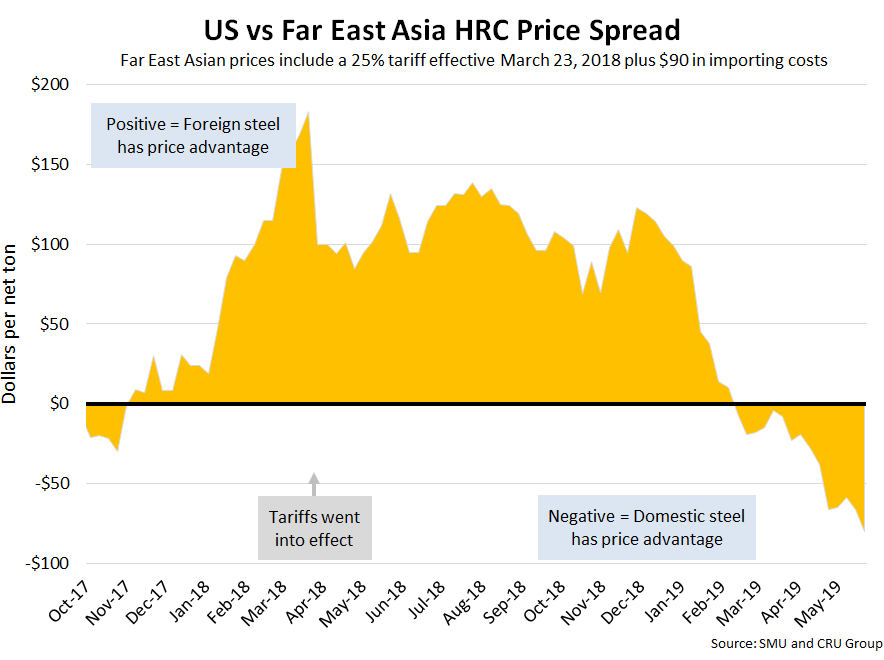
The graph below shows all four prices together and points out the effective date of the tariffs. Foreign prices are referred to as “equalized,” meaning they have been adjusted with the tariffs and importing costs for an apples-to-apples comparison against the U.S. price.
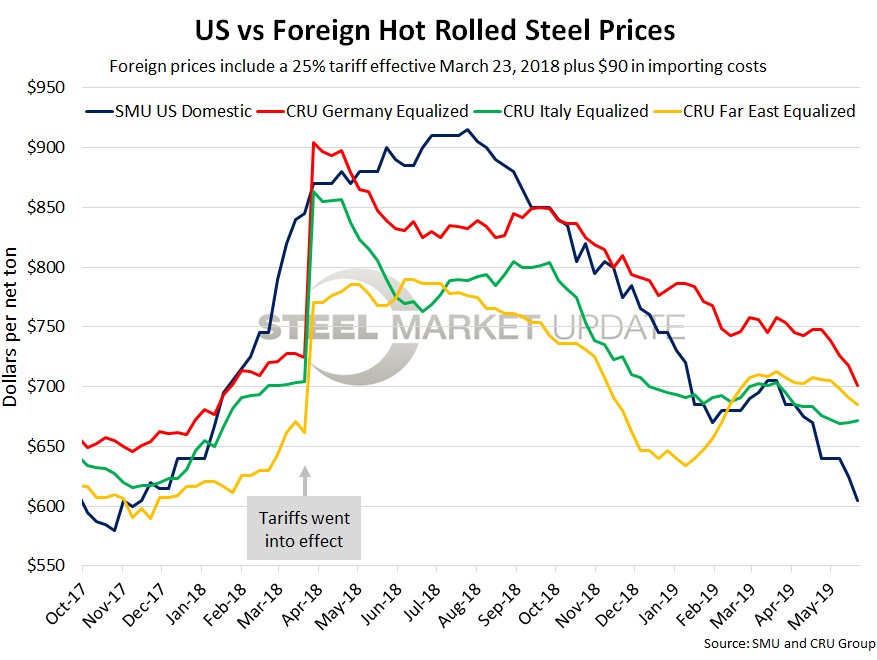
Note: Freight is an important part of the final determination on whether to import foreign steel or buy from a domestic mill supplier. Domestic prices are referenced as FOB the producing mill, while foreign prices are FOB the Port (Houston, NOLA, Savannah, Los Angeles, Camden, etc.). Inland freight, from either a domestic mill or from the port, can dramatically impact the competitiveness of both domestic and foreign steel. When considering lead times, a buyer must take into consideration the momentum of pricing both domestically and in the world markets. In most circumstances (but not all), domestic steel will deliver faster than foreign steel ordered on the same day.

Brett Linton
Read more from Brett LintonLatest in International Steel Prices
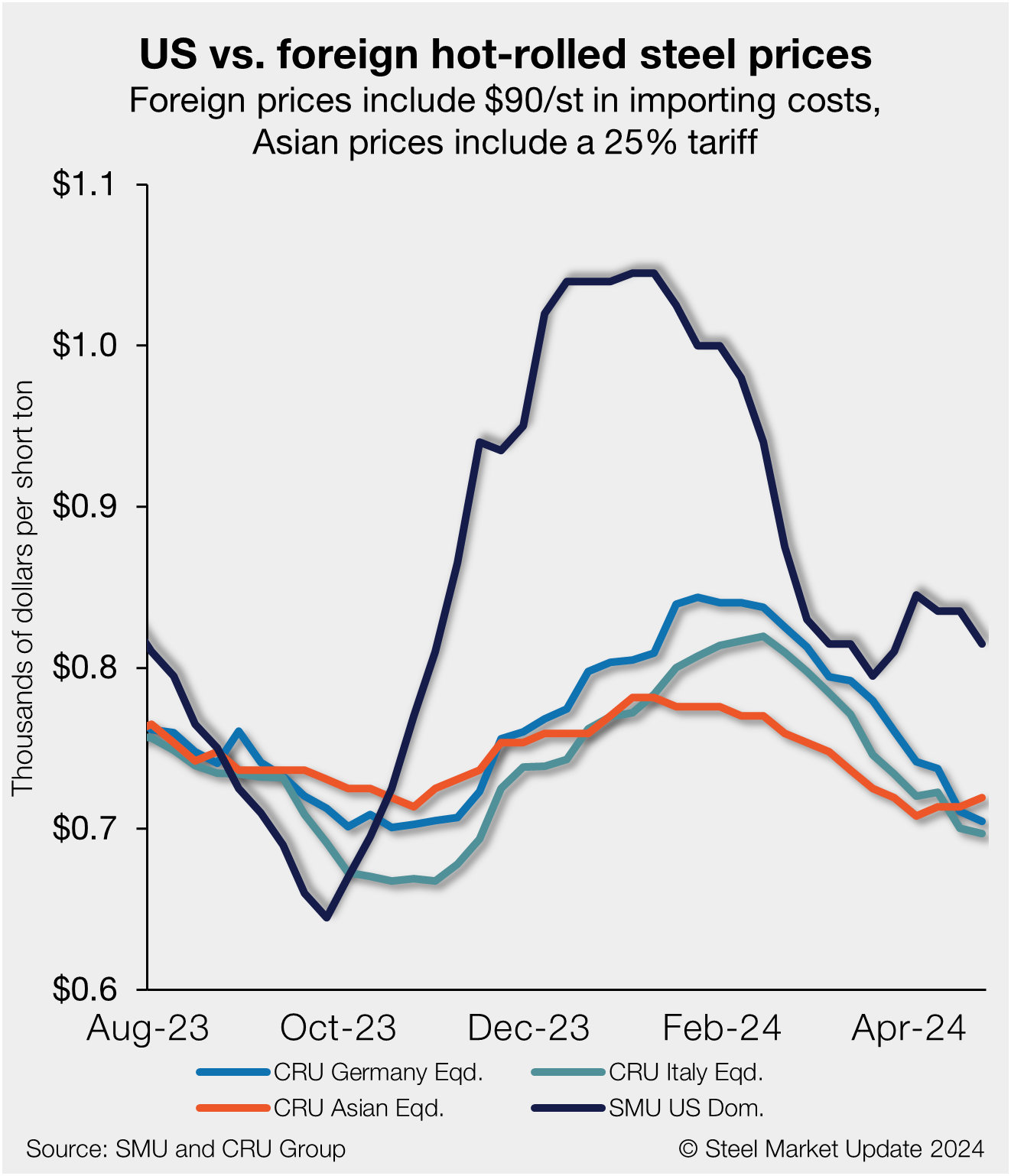
US HR premium dips even as stateside tags edge lower
US hot-rolled (HR) coil remains more expensive than offshore hot band, though with a tighter premium as prices stateside and abroad have ticked lower in recent weeks.

CRU: Sheet prices stable w/w in most areas of the world
Steel sheet prices in many regions of the world were steady week over week in the week ended April 17.
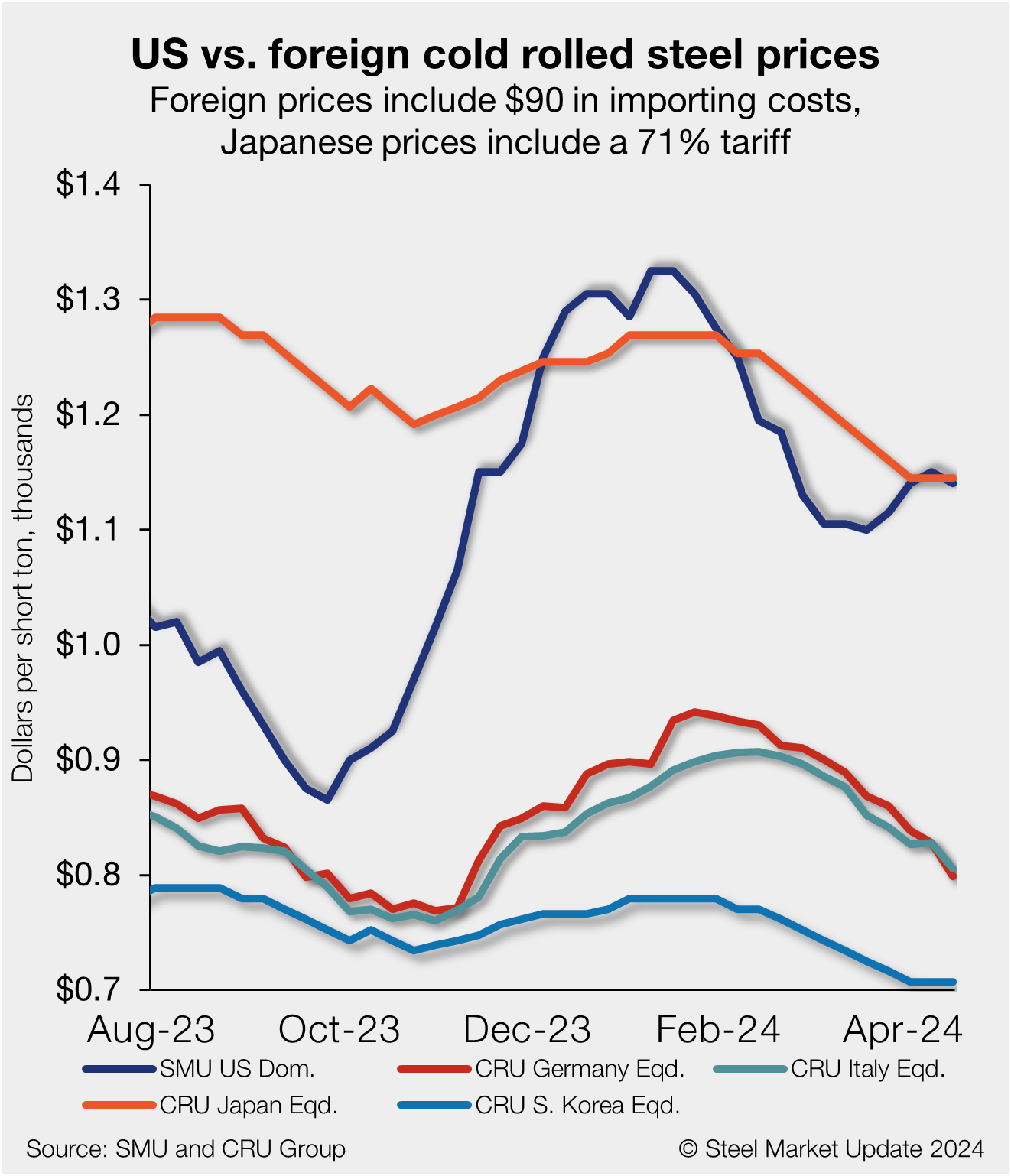
US CR tags 30% more than imports
Foreign cold-rolled (CR) coil remains less expensive than domestic product, according to SMU’s latest check of the market.
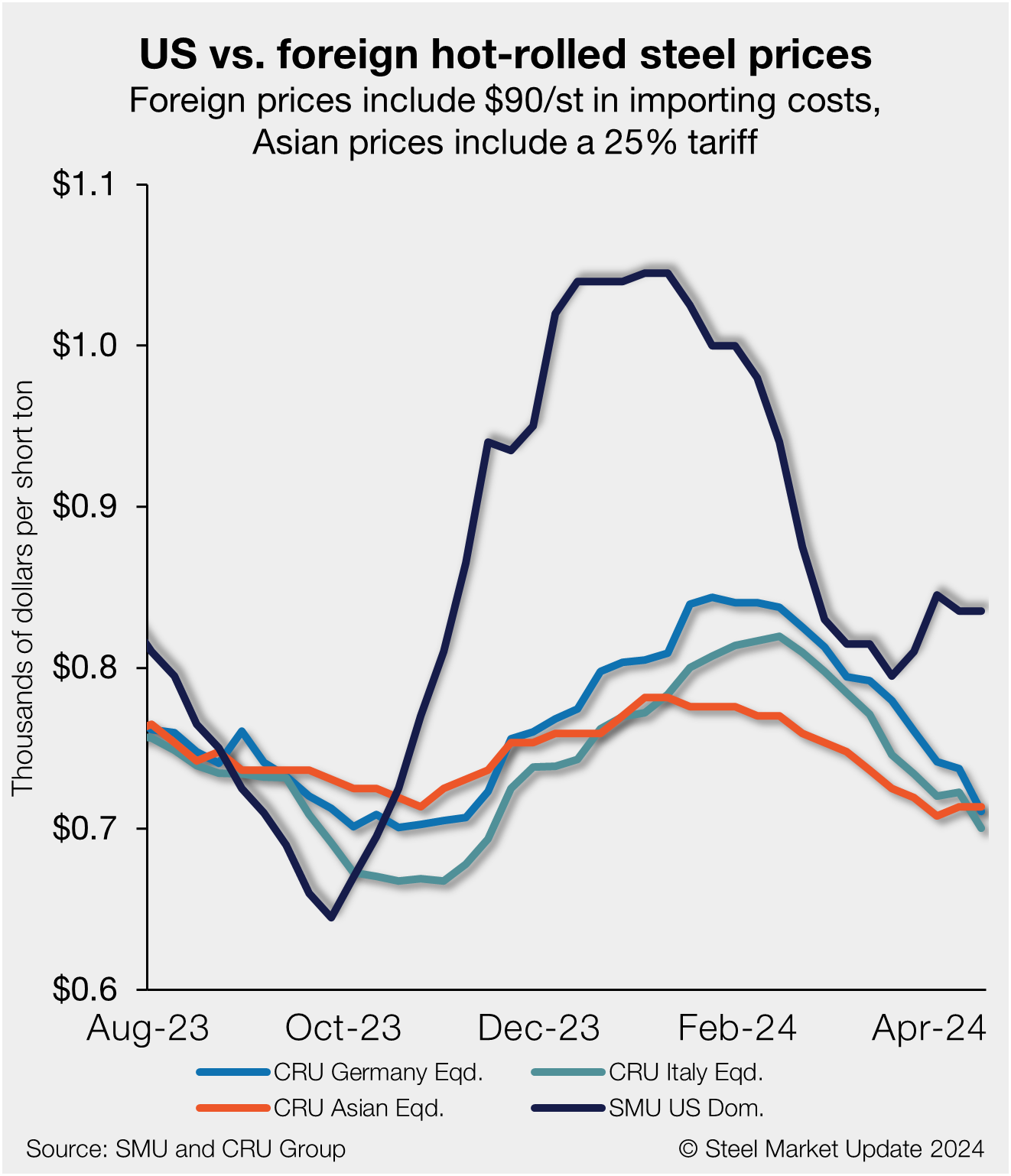
US HR premium widens on lower offshore tags
US hot-rolled (HR) coil has become gradually more expensive than offshore hot band in recent weeks, as stateside prices have stabilized while imports moved lower.
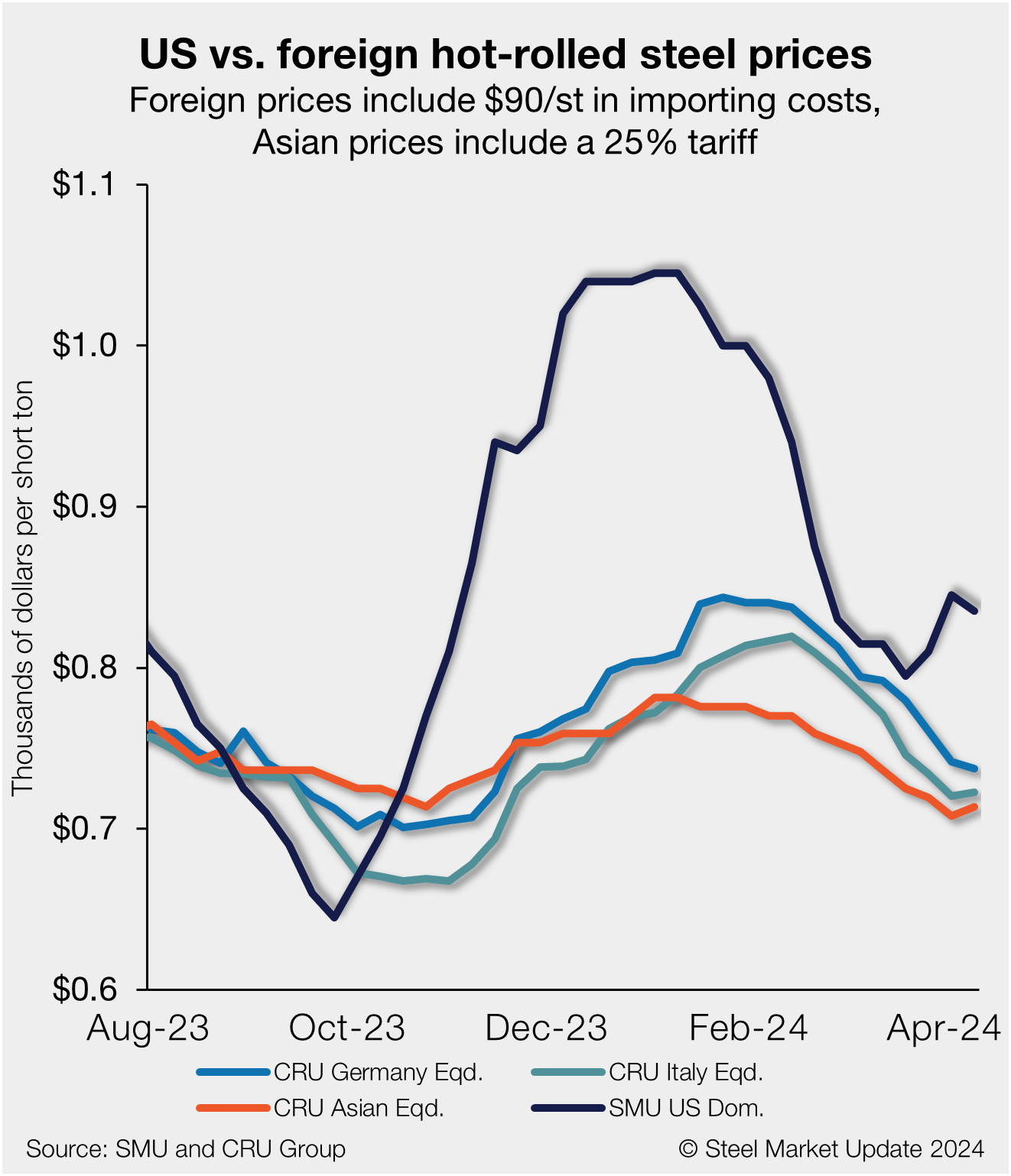
US HR prices slip, though still more expensive than imports
US hot-rolled (HR) coil has become increasingly more expensive than offshore hot band as stateside prices have moved higher at a sharper pace vs. imports.
